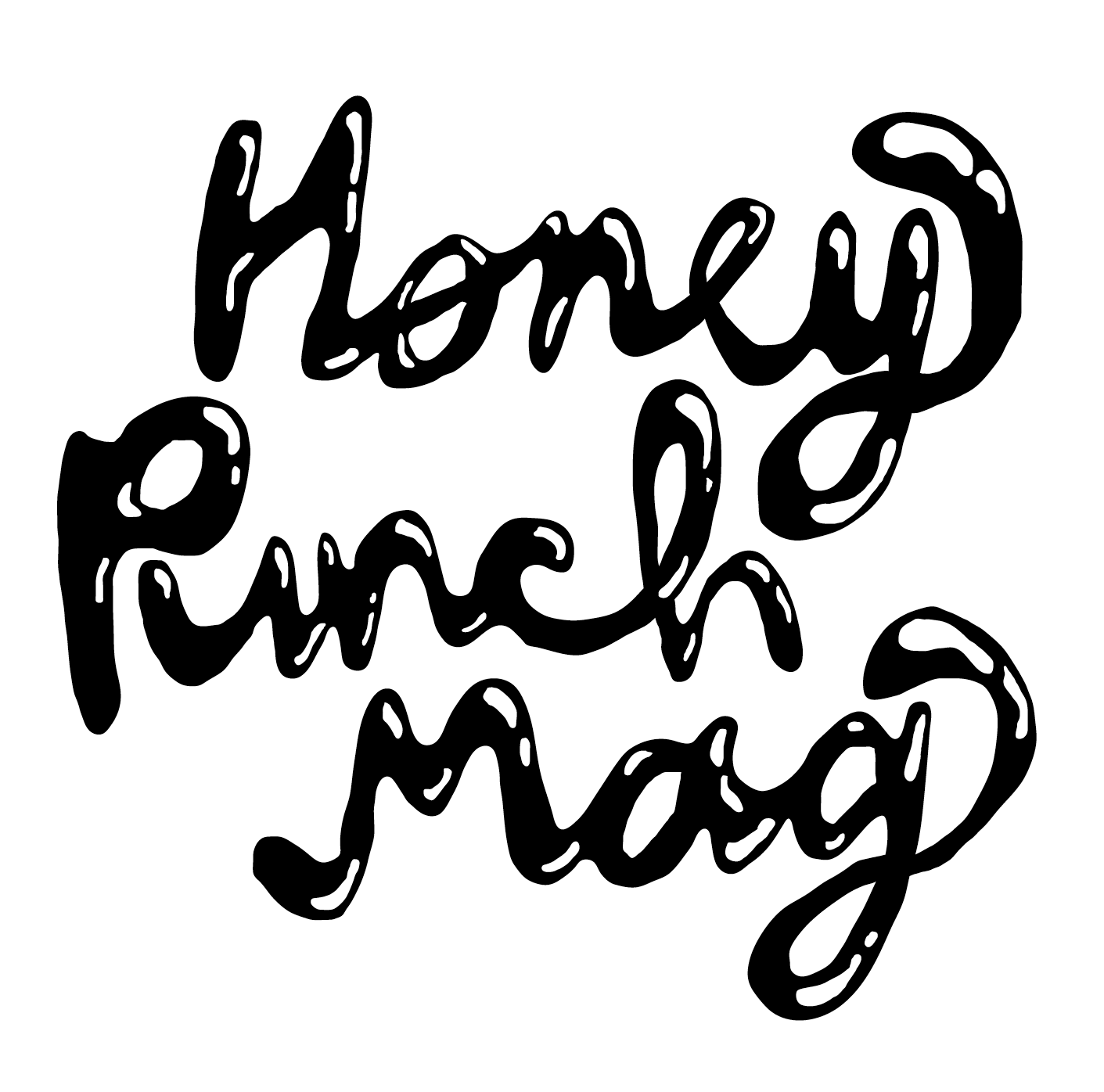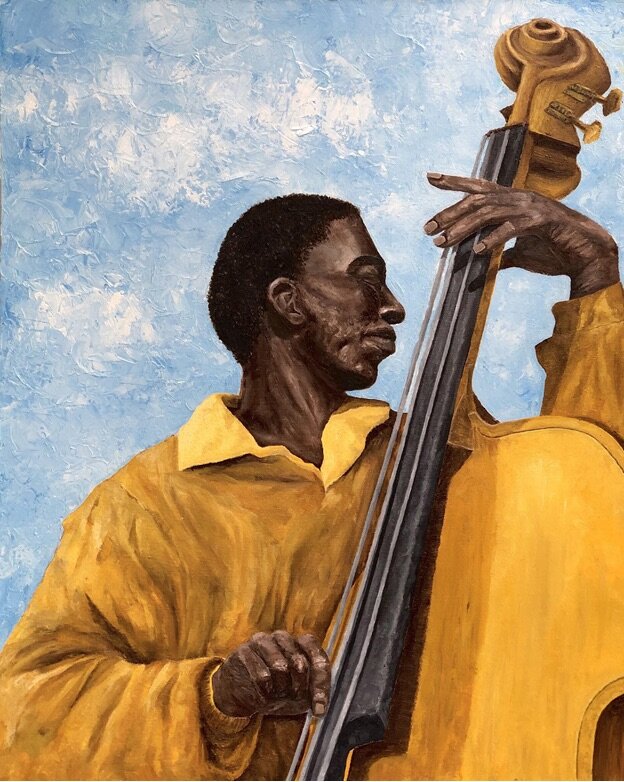Jazz: A Comeback Story
By Sydney Cramer
Art by Meg Mcarthy
Jazz. What image comes to mind upon reading that ominous word? A 60 year old white man named Lester who owns multiple cats and still uses floppy disks? High school percussionists drumming their hands bloody instead of doing their math homework? Your grandpa who pronounces “huge” without the h? I get it- jazz undoubtedly has its stereotypes and associations. I always painted jazz as being long, headache inducing strands of notes that sounded brutally unsatisfying when placed next to each other. If I’m being completely honest, it wasn’t until my later high school years that I actually enjoyed listening to jazz (beyond the one Miles Davis record I picked up at Goodwill for 3 dollars).
I recently attended a BADBADNOTGOOD show at Lincoln Hall and thoroughly enjoyed taking in an evening of fun, experimental jazz. As I scanned the crowd, the median age couldn’t have been any higher than 25-27. It was a relatively young crowd seriously getting their scatt-jazz on. Who would’ve thought that Millienals and Gen Z-ers (outside of the ones who were intensely involved in jazz band during high school) were genuinely enjoying jazz music? It was at this show that I realized the expansive nature of jazz; its fluidity, its experimentation, its evolution. Traditional jazz is accurately described as an acquired taste, but this new wave of jazz-fusion washing over young music lovers is making this genre excitingly accessible to audiences of all musical preferences- and that has to be one of the most exciting evolutions happening in music right now.
Hip-Hop and R&B has surpassed just about every other genre as being the most popular and listened to style of music in America this past decade. From festivals, to Uber rides, to shopping malls, Hip-Hop has been the backing track in almost every public space I’ve been in growing up. While traditional jazz isn’t typically my go-to listen, the fusion of these two genres has become a hot commodity amongst young music lovers, bringing me some of my favorite music artists as of late. Anderson .Paak’s 2016 Malibu was one of my first tastes of jazz influenced Rap and Funk. Opening track “The Bird” blends Paak’s smooth laid back drum beats with gentle echoes of trumpet and jazzy piano lines. His more recent upbeat track “King James” off of 2019’s Ventura brings in a larger ensemble of horns that Paak layers between layers of R&B synths and vocal harmonies. Paak’s ability to incorporate jazz elements in upbeat, danceable R&B bops is an impressively wonderful asset to have as a musician. And we can’t forget Anderson .Paak’s incredible backing band, The Free Nationals, who recently released their own debut album packed with jazz elements similar to Paak’s compositions. Though undeniably a funk and R&B band at its core, groovy tracks such as “Eternal Light” and “Apartment” introduce jazz drum beats and rich bass lines that pay tribute to the band’s jazz and funk influences such as Stevie Wonder and Erykah Badu.
Other jazz Rap and R&B heavy hitters such as Kendrick Lamar and The Internet have made waves in the contemporary jazz scene, piggybacking off of earlier jazz experimenters like Digable Planets and A Tribe Called Quest. Lamar’s 2015 record To Pimp A Butterfly is a love letter to this fusion of sounds, creating one of the most significant jazz Rap albums of the 2000s. Collaboration seems to be the name of the game in the jazz Rap world- Lamar featured music collaborators like Thundercat and Snoop Dogg, artists who have fused jazz elements into their own music. Chicago’s own Sen Morimoto has been a monster collaborator since coming onto the scene in 2017. Morimoto brings his impressive saxophone playing to the forefront of his genre fluid compositions. Collaborating with countless Chicago musicians such as KAINA, Lala Lala, and NNAMDI, Morimoto uses his unique indie-jazz-rap flare to bring magic to other musician’s work as well as his own. Much like Morimoto, up and coming ensemble Abstract Tribe is capitalizing on collaboration, utilizing the strengths of many musicians to blend sounds together. With artists as fluid and open as Morimoto and Abstract Tribe, a track may begin with a soft horn line, introduce R&B harmonies, and evolve into loose rap verses. Each track brings a fun, unexpected surprise that keeps the listener on their toes.
Growing up in an era of DIY music with an abundance of room for experimentation, I’ve seen Jazz influences creep their way into Indie-esque bands. Chicago’s Corn on My Dinner Plate has introduced Jazz into their dynamic compositions in a more overt way, blending elements of jazz with funk and soul. There’s a lot of jazz happening between the 7 instrumentalists in the studio, and on stage. Cutting jazzy drums and bass lines with funky organs and Indie-toned rhythm guitar consumes the listener in a pool of sound so easy to listen to, you’d hesitate to call it jazz right off the bat. Multi Instrumentalist prodigy Cosmo Pyke is another Indie artist with heavy Jazz influences. All from the confines of his bedroom, Pyke released his first EP Just Cosmo at just 18 years old. The core of his songs lie in the Jazz chords he strums from the echoing reverb of his guitar. Pyke’s laid back vocals make for songs easy to sing along to and quick to stick in your head. Track 5 “Great Dane”, my personal favorite song in his repertoire, brings in relaxed drums and sour-sounding guitar chords that somehow blend to create a chill, easy to listen to composition. Clearly these musicians grew up on jazz, and are now paying tribute to those influences through contemporary indie bops.
I couldn’t possibly finish this piece without mentioning BADBADNOTGOOD’s inspiring collaborations with artists of varying music styles. While the quartet is classically trained as a jazz band with their first EP consisting of more traditional compositions, they have quickly taken off as a collaborative force, bringing their unique jazz sound to the forefront of countless other artist’s records. From their wildly creative collaborations with Hip-Hop and R&B artists Ghostface Killah, Snoop Dogg, and Daniel Caesar, to the avant-garde Stereolab, to songwriter Charlotte Day Wilson, BADBADNOTGOOD proves with each song they release that Jazz can be so much more than sour-sounding jams. Fusing electronic production and Hip-Hop and R&B vocalists with Jazzy time signatures and unexpected key changes makes the Jazz elements of each composition more listenable to the average consumer. It brings a unique complexity to the oversaturated Hip-Hop and Rap world that challengers listeners to think about what they’re listening and get excited about the unique sounds they hear. I’m impressed by any contemporary artist that can fold jazz into their sound, but BADBADNOTGOOD in my eyes is the epitome of this new collaborative genre that has yet to see its full potential.
So listen… I’m not here to force people to listen to Jazz. My intention isn’t to claim any ownership over this complex genre or appear as though I have it all figured out. If I picked up my guitar and attempted a Jazz scale I would definitely slip up. I rambled on for 1,000 words about Jazz because I think it’s important to explore musical genres outside of our comfort zone- whatever that genre may be for you. I’m sure we’ve all been guilty in the past of writing off certain genres before fully exploring them, and I’ve often gone back and found gems buried in places I skimmed over. Like it or not, Jazz is coming back in a big and new way. It’s fluidity is ever-expanding, bringing young folks and old cats to the same party.
Want some help getting started? Check out my playlist below for jazz-fusion newbies!

